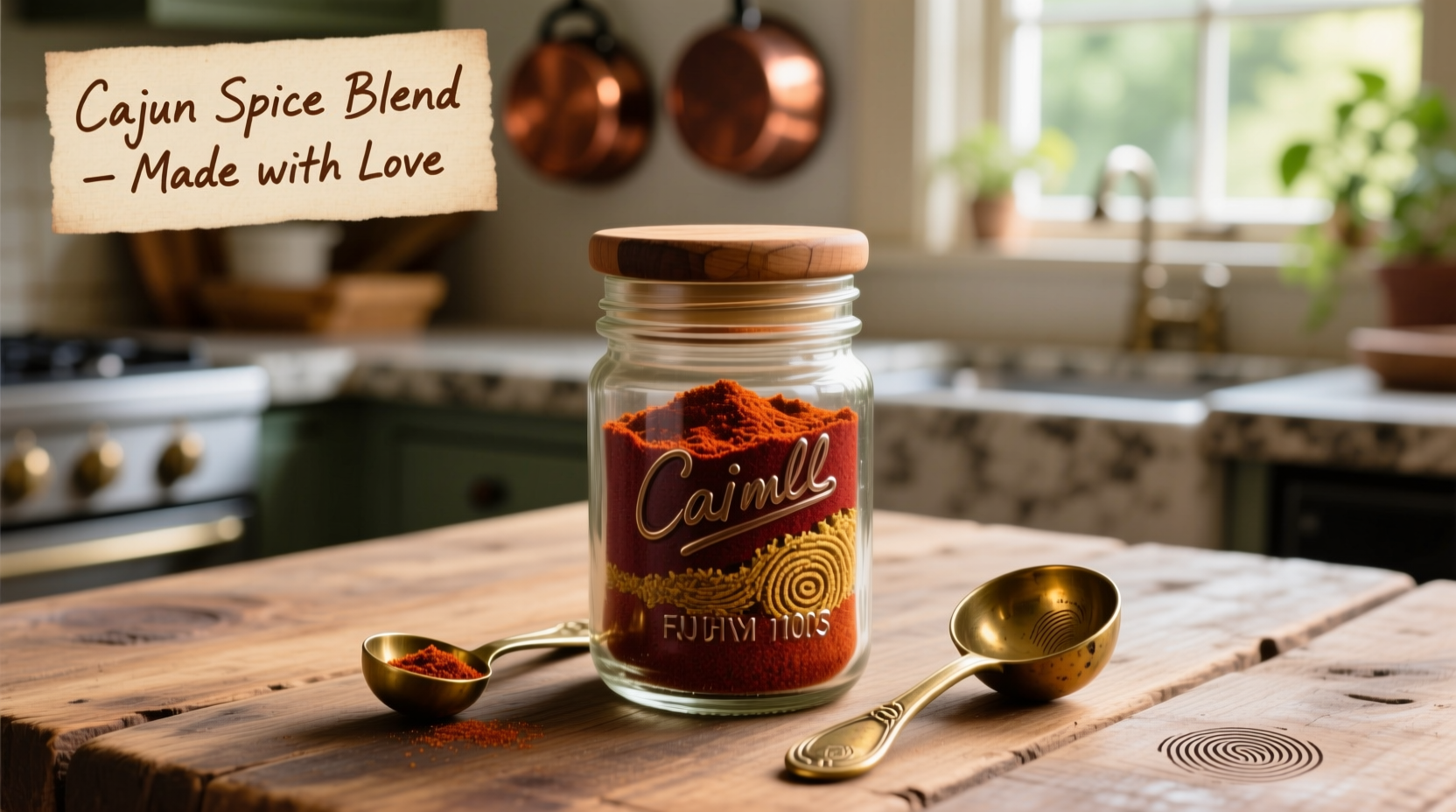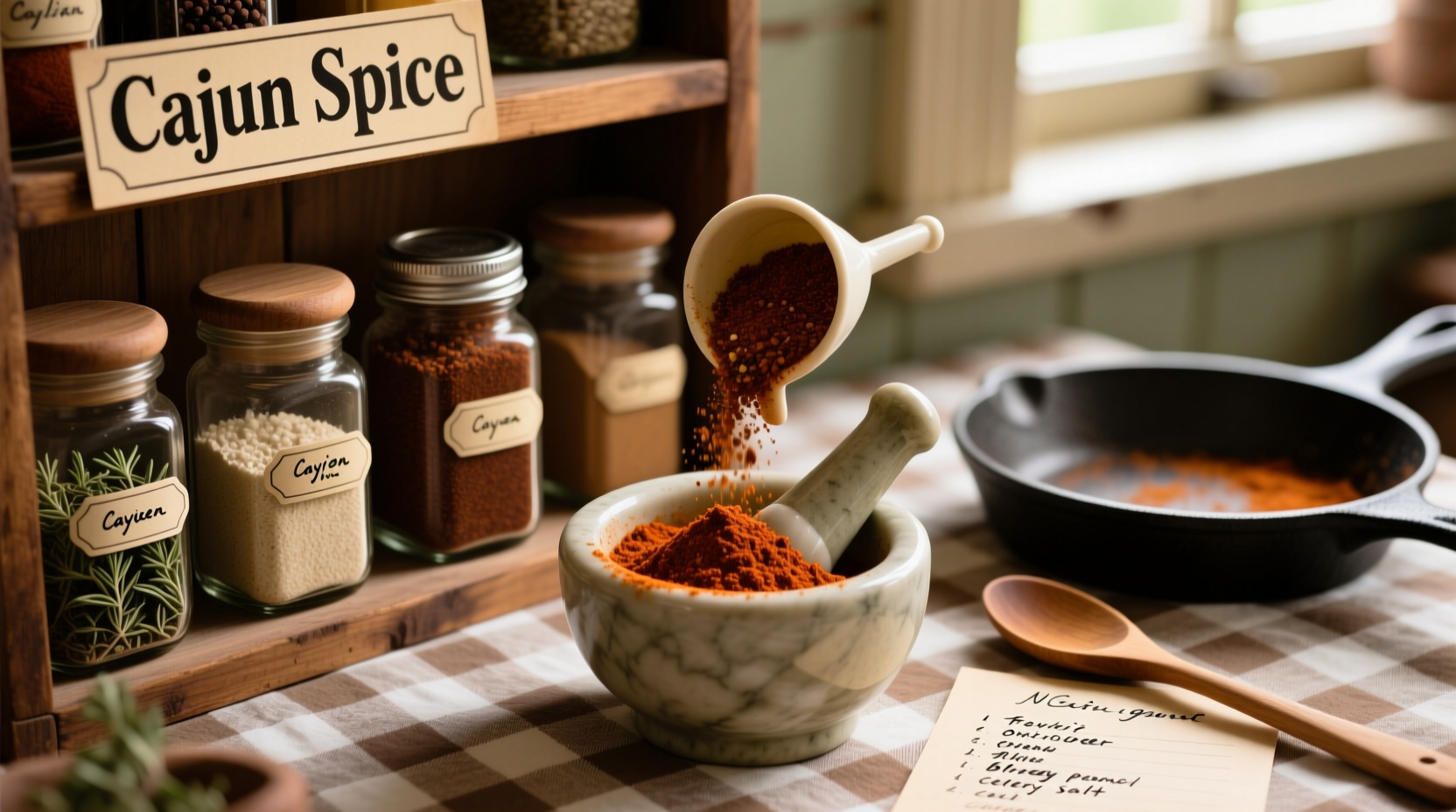Create authentic Cajun spice in 10 minutes with this simple recipe: Combine 2 tablespoons paprika, 1 tablespoon garlic powder, 1 tablespoon onion powder, 1 tablespoon cayenne pepper, 1 tablespoon dried oregano, 1 tablespoon dried thyme, 2 teaspoons black pepper, 2 teaspoons salt, and 1 teaspoon white pepper. Mix thoroughly and store in an airtight container. Homemade Cajun spice delivers fresher, more vibrant flavors than store-bought versions and allows you to customize heat levels to your preference.
The Essential Guide to Crafting Authentic Cajun Spice at Home
Nothing transforms ordinary ingredients into extraordinary Louisiana-inspired dishes like freshly made Cajun spice. Commercial blends often contain fillers and lose potency during extended shelf life. When you make your own, you control the quality, freshness, and heat level—ensuring your jambalaya, grilled shrimp, or roasted vegetables burst with authentic flavor. This guide provides everything you need to create professional-quality Cajun seasoning that surpasses anything you'll find in stores.
Understanding What Makes Cajun Spice Unique
Cajun seasoning originated with French settlers in rural Louisiana who adapted their culinary traditions using available ingredients. Unlike Creole seasoning which typically includes tomatoes and a more refined herb profile, authentic Cajun spice relies on a robust combination of peppers, garlic, and earthy herbs. The key to authenticity lies in the balance of heat from cayenne with the earthy depth of paprika and the aromatic complexity of dried herbs.
| Characteristic | Cajun Spice | Creole Seasoning |
|---|---|---|
| Origin | Rural Acadiana ("Cajun Country") | Urban New Orleans |
| Heat Level | Generally hotter | Milder, more balanced |
| Key Ingredients | Paprika, cayenne, garlic, onion | Similar but often includes celery salt, bell peppers |
| Herb Profile | Thyme and oregano dominant | More varied herb combinations |
Why Freshness Matters: The Science Behind Homemade Spice Blends
Ground spices begin losing volatile compounds immediately after grinding. According to research from the University of California's Agriculture and Natural Resources department, pre-ground spices can lose up to 40% of their flavor compounds within six months. When you make your own Cajun spice blend, you're working with ingredients that still retain their essential oils and aromatic properties. This freshness translates directly to more vibrant, complex flavors in your cooking.
Perfect Proportions: The Authentic Cajun Spice Recipe
The following measurements create a balanced blend that honors traditional Louisiana flavors while allowing for customization. This recipe makes approximately ½ cup of seasoning—enough for multiple uses while maintaining peak freshness.
| Ingredient | Measurement | Why It Matters |
|---|---|---|
| Paprika (preferably Hungarian) | 2 tablespoons | Provides deep color and earthy base flavor |
| Garlic powder | 1 tablespoon | Essential savory backbone without raw garlic bite |
| Onion powder | 1 tablespoon | Complements garlic with sweet, aromatic notes |
| Cayenne pepper | 1 tablespoon | Primary heat source—adjust to taste |
| Dried oregano | 1 tablespoon | Earthy herbal note characteristic of Cajun cooking |
| Dried thyme | 1 tablespoon | Floral complexity that defines authentic blends |
| Black pepper (freshly ground) | 2 teaspoons | Sharp heat that complements cayenne |
| Salt | 2 teaspoons | Enhances all flavors—omit if using in salt-sensitive recipes |
| White pepper | 1 teaspoon | Subtle heat with different flavor profile than black pepper |
Step-by-Step Preparation: Maximizing Flavor Potential
- Prepare your workspace: Use a clean, dry bowl and whisk. Any moisture will cause clumping and reduce shelf life.
- Measure precisely: Use proper measuring spoons (not cutlery) for accuracy. Level off each ingredient with a straight edge.
- Combine ingredients: Add all components to the bowl, starting with the largest volume ingredients first.
- Mix thoroughly: Whisk for 2-3 minutes to ensure even distribution. Incomplete mixing creates pockets of intense heat.
- Store properly: Transfer to an airtight glass container away from light and heat. Properly stored, your blend remains potent for 3-4 months.

Customizing Your Blend: Regional Variations and Personal Preferences
Traditional Cajun cooking varies across Louisiana's regions. The following adjustments let you tailor your spice blend to specific applications:
- For seafood dishes: Reduce cayenne by half and add ½ teaspoon celery seed for a more coastal profile
- For poultry: Increase thyme by ½ teaspoon and add ¼ teaspoon rubbed sage
- Milder version: Replace 2 teaspoons of cayenne with additional paprika
- Extra heat: Add ½ teaspoon cayenne and ¼ teaspoon crushed red pepper flakes
- Smoky variation: Substitute 1 tablespoon regular paprika with smoked paprika
Avoiding Common Mistakes: Expert Tips for Perfect Results
Based on professional kitchen experience, these pitfalls can ruin your homemade Cajun spice:
- Using old spices: Check expiration dates—spices older than 6 months lose potency. The University of Illinois Extension recommends replacing ground spices every 6-12 months for optimal flavor.
- Inconsistent measurements: Spoon ingredients into measuring spoons rather than scooping directly—this prevents packing and ensures accuracy.
- Improper storage: Avoid plastic containers which can retain moisture and odors. Glass with tight-sealing lids preserves freshness longest.
- Adding liquid ingredients: Never include oils or liquids in dry spice blends—they create breeding grounds for bacteria and reduce shelf life.
When to Use Cajun Spice: Contextual Applications
Cajun seasoning works best with specific ingredients and cooking methods. Understanding these context boundaries ensures optimal results:
- Ideal applications: Rub for grilled meats, seasoning for blackened fish, flavor base for gumbo and jambalaya, popcorn seasoning, roasted vegetable enhancer
- Limited effectiveness: Delicate seafood like scallops (use half the amount), sweet dishes, light broths where the spice might overpower
- When to choose alternatives: For tomato-based dishes like étouffée, consider a Creole seasoning instead; for dry rubs requiring sweetness, add brown sugar to your Cajun base
Evolution of Cajun Seasoning: A Brief Timeline
Understanding the historical development of Cajun seasoning helps appreciate its authentic composition:
- 1755-1764: Acadian expulsion from Canada leads to settlement in rural Louisiana
- 1800s: French cooking techniques merge with available ingredients including local peppers, wild herbs, and smoked meats
- Early 1900s: Commercial spice production begins in New Orleans, though rural Cajun communities continue making their own blends
- 1980s: Paul Prudhomme popularizes Cajun cooking nationally with his blackened redfish technique
- Present day: Authentic Cajun spice maintains its core ingredients while commercial versions often include fillers like cornstarch
Putting Your Homemade Cajun Spice to Work
For immediate impact, try these professional techniques:
- Dry brining: Rub 1-2 tablespoons onto chicken thighs 1 hour before cooking for deeply seasoned meat
- Compound butter: Mix 2 tablespoons Cajun spice with ½ cup softened butter for instant flavor boost
- Seasoning oils: Steep spices in warm oil for 10 minutes, then strain for Cajun-infused cooking oil
- Finishing touch: Sprinkle lightly over finished dishes for aromatic burst without cooked-off flavors
Frequently Asked Questions
How long does homemade Cajun spice last?
Properly stored in an airtight glass container away from light and heat, homemade Cajun spice maintains optimal flavor for 3-4 months. While safe to use beyond this timeframe, flavor potency gradually diminishes after 6 months. For best results, make smaller batches you'll use within 3 months.
Can I make Cajun spice without cayenne pepper?
Yes, but the blend won't be authentically spicy. Substitute with 1½ tablespoons paprika plus ½ teaspoon red pepper flakes for similar heat level. For milder versions, use sweet paprika and adjust black and white pepper proportions. Traditional Cajun cooking always includes some heat element, so completely omitting spicy components creates a different seasoning profile.
Why does my homemade Cajun spice taste different than store-bought versions?
Commercial blends often contain anti-caking agents like silicon dioxide and sometimes fillers like cornstarch that alter texture and flavor release. Homemade versions use pure ingredients that deliver brighter, more complex flavors. Additionally, many store brands adjust recipes for mass appeal, reducing traditional heat levels. Your homemade blend reflects authentic regional flavors rather than commercialized versions.
Should I toast the spices before mixing?
Toasting individual whole spices before grinding enhances flavor, but for pre-ground ingredients in this recipe, toasting isn't recommended. Ground spices burn easily and become bitter when exposed to direct heat. The exception is if you're starting with whole seeds (like cumin or coriander) which benefit from light toasting in a dry pan before grinding. For this Cajun blend using pre-ground ingredients, simply mix without additional heating.
Can I use fresh herbs instead of dried in Cajun spice?
No, fresh herbs contain moisture that would spoil the dry spice blend and create food safety risks. Dried herbs have 90-95% less moisture than fresh, making them suitable for dry blends. The drying process also concentrates certain flavor compounds, creating the characteristic intensity needed in spice blends. Use the standard conversion of 1 teaspoon dried herbs = 1 tablespoon fresh when adapting recipes, but keep your spice blend strictly dry.











 浙公网安备
33010002000092号
浙公网安备
33010002000092号 浙B2-20120091-4
浙B2-20120091-4